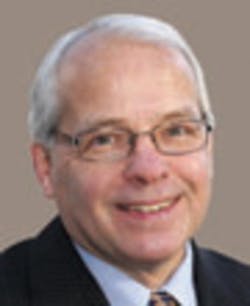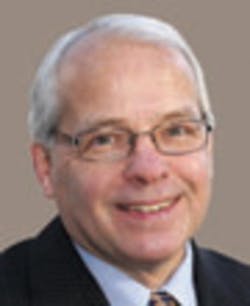In 2012, we can expect to see a technological transformation rivaling that wrought by electrification, telephony, and the dawn of the automobile age a century ago. That’s according to Mark P. Mills, a physicist and founder of the Digital Power Group, and Julio M. Ottino, dean of the McCormick School of Engineering and Applied Sciences at Northwestern University. Those earlier innovations, they wrote Jan. 30 in the Wall Street Journal, initiated “…a century of phenomenal economic growth.
The transformation occurring now, noted Mills and Ottino, is driven by big data (embodying cloud computing), smart manufacturing, and the wireless revolution. It is bringing about rapid changes in the nature of design, test, and manufacturing, based on presentations at DesignCon Jan. 31–Feb. 2 in Santa Clara, CA.
Ross Nelson, general manager for digital debug solutions in Agilent Technologies’ Electronic Measurement Group, said during a press conference on Jan. 31 that increasingly pervasive mobile computing devices are driving new technology. “No longer can you simply down-deploy last-generation computing technology into mobile/embedded/consumer designs,” he said. “The technologies used in mobile computing designs must deliver similar performance as those used in server-computing but must be optimized for low power, low cost, and low profile.” As for cloud computing, Nelson noted that the mobile devices offer sufficient bandwidths to place demands on the cloud servers that need to handle the data the mobile devices generate and demand.
The combined innovation shift driven by mobile and cloud innovations, Nelson said, presents significant challenges for designers looking to debug their designs.
Nelson presented several slides showing the many test instruments Agilent offers to address debug for a variety of scenarios. He said it is unlikely that Agilent will fit all the capabilities into one box. He likened Agilent’s approach to that of a high-end audio manufacturer offering components to audiophiles. Some may opt for an all-in-one system, but the ultimate in performance and flexibility will be available to those willing to select optimized instruments for each measurement task.
Dr. Elan Spillinger, vice president for hardware and technology at the Microsoft Interactive Business Entertainment Unit, provided insight into the transformation in manufacturing during a keynote address at DesignCon. Hardware at Microsoft has a 30-year history, he said, with the company working with a manufacturing supply chain to deliver products in high volumes.
Spillinger traced major changes in user interfaces over the last 30 years: from mouse and keyboard to what he calls the “natural user interface”—with pervasive touch, voice, and vision sensors.
Spillinger advised the audience on how to deliver innovation, recommending flexibility, discipline, and focus. Flexibility, he said, allows engineers to be creative and follow transformational trends. Discipline enables companies to bring products to market in high volumes. And focus will help meet specific goals such as time-to-market or low cost.
He elaborated on techniques required in this transformational age, citing a variety of DfX (design for excellence) acronyms: DfA (design for assembly), DfC (design for compliance), DfG (design for green), DfM (design for manufacturability), DfSo (design for sourcing), DfSa (design for safety), DfR (design for reliability), DfSe (design for serviceability), and DfT (design for testability).
Spillinger concluded his address with some excellent advice, “When you start a project, believe in what you are going to do.”

